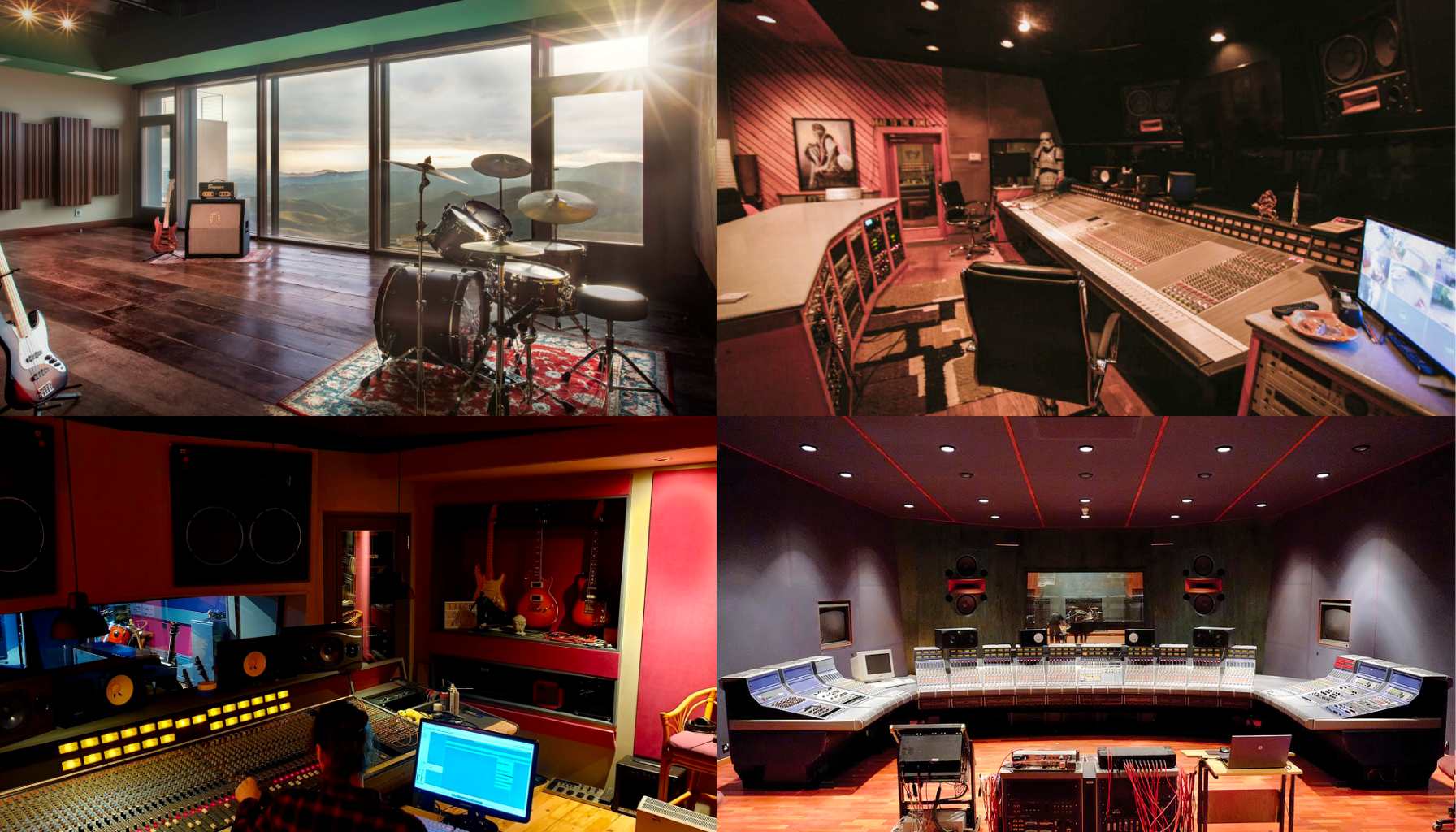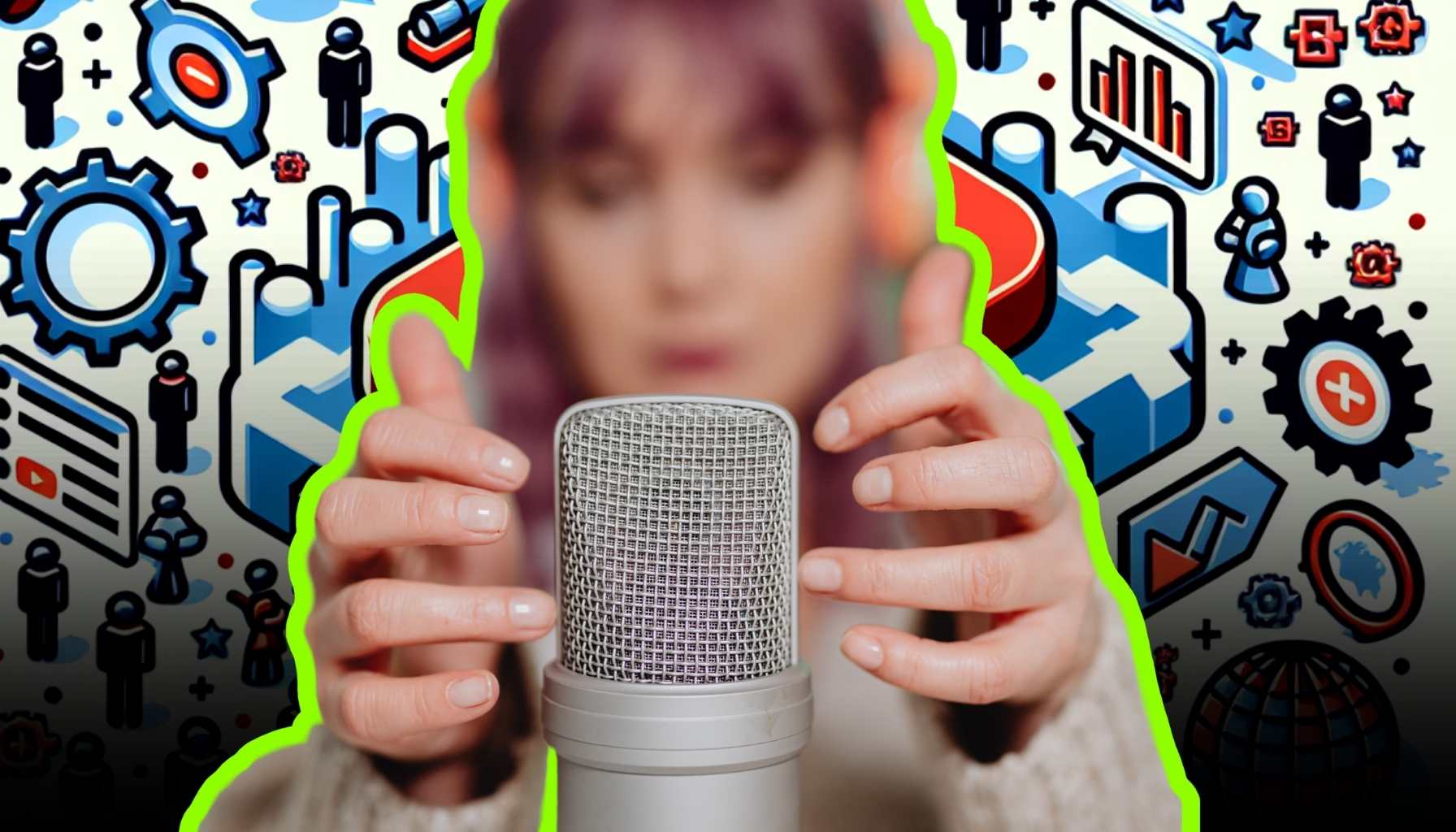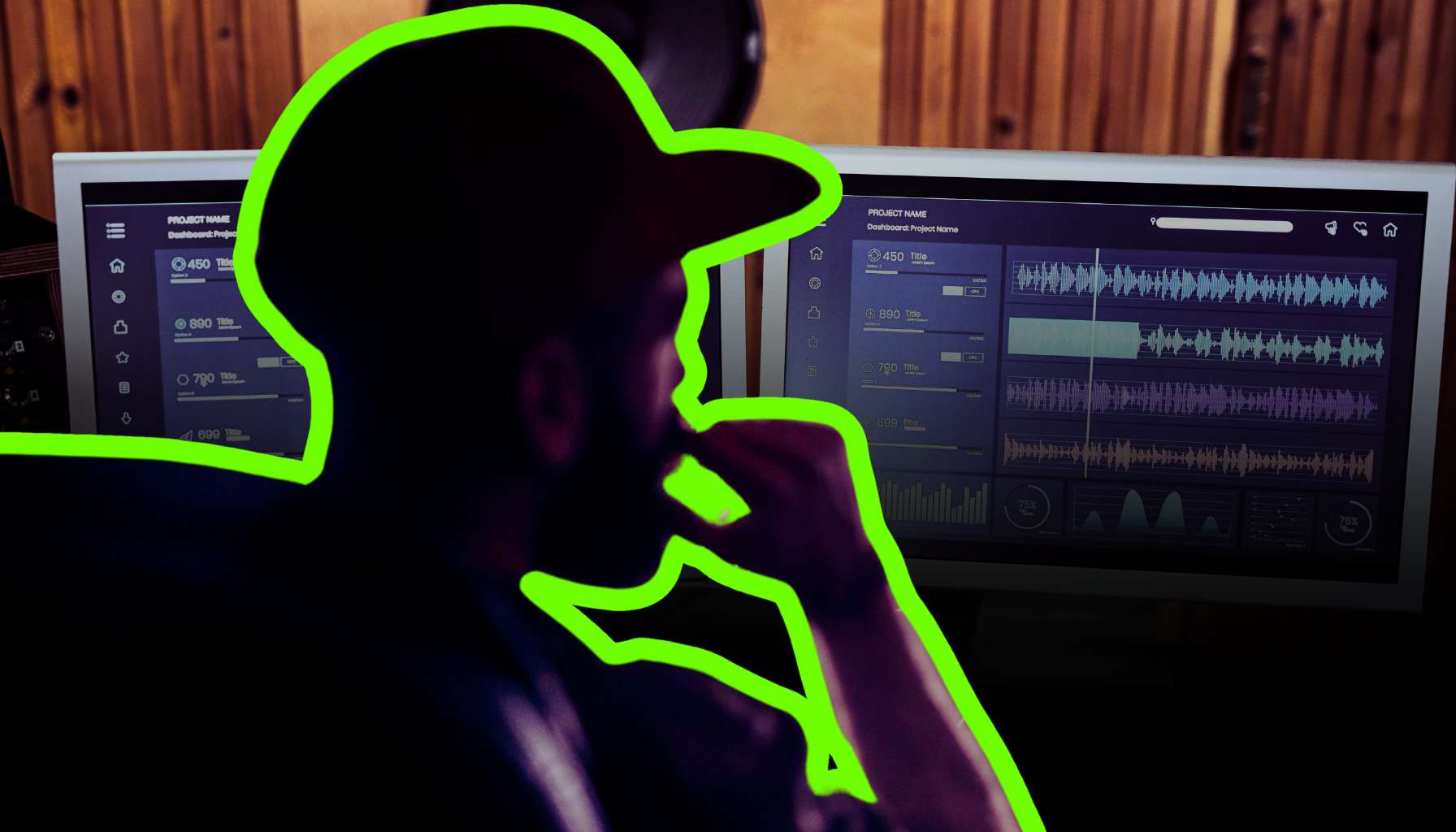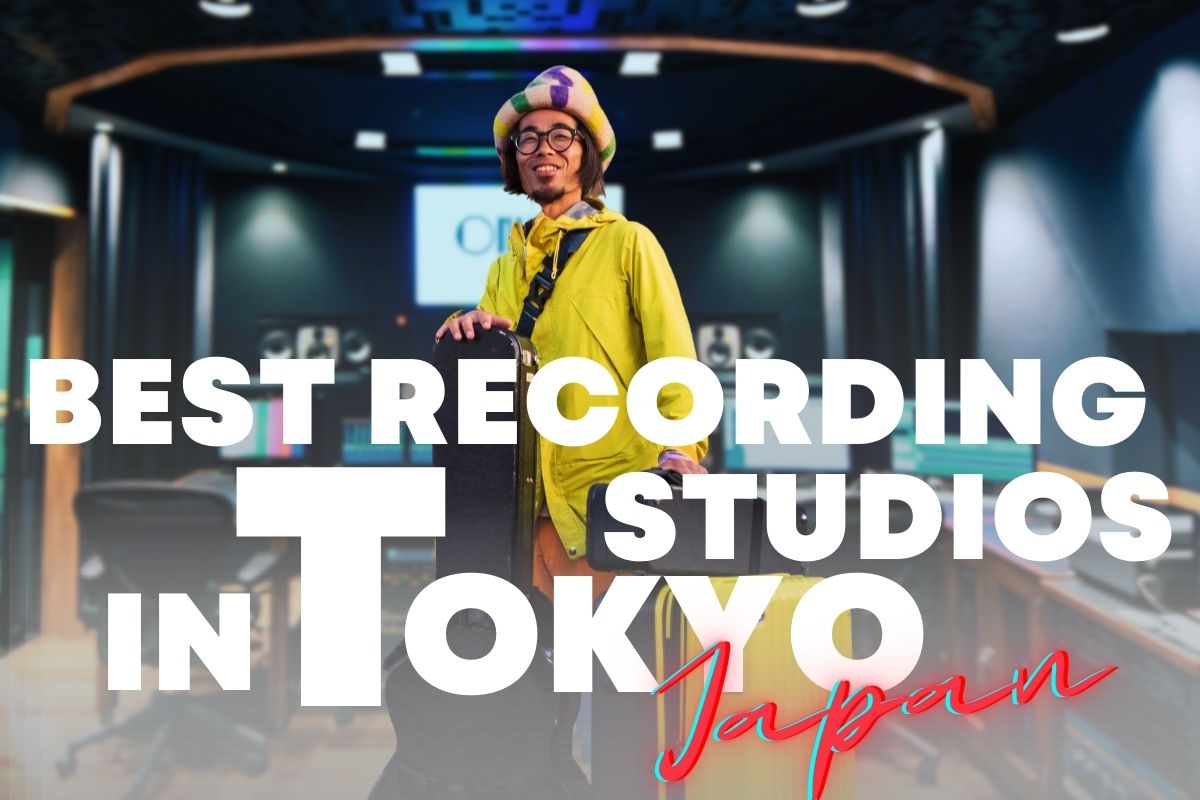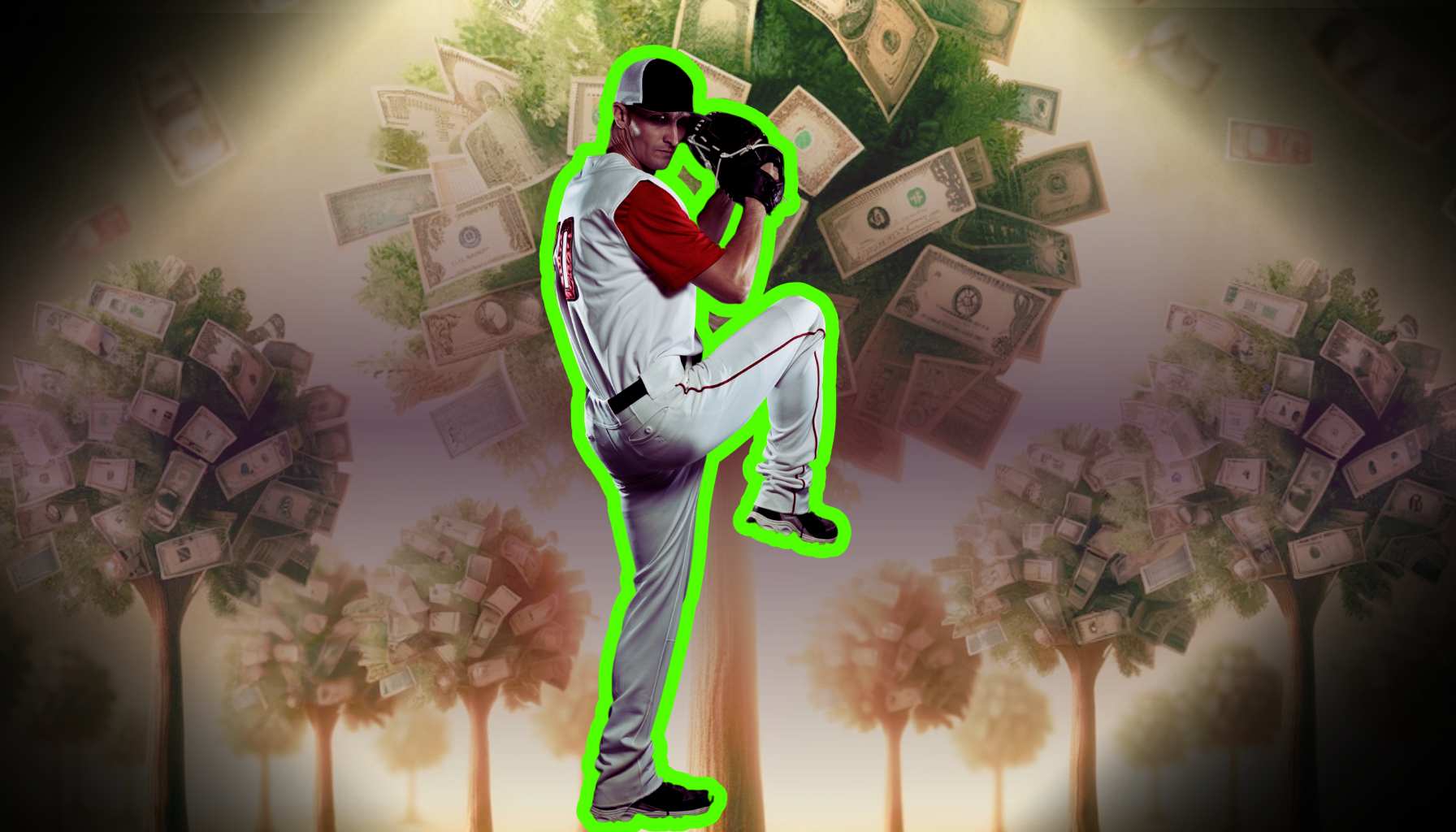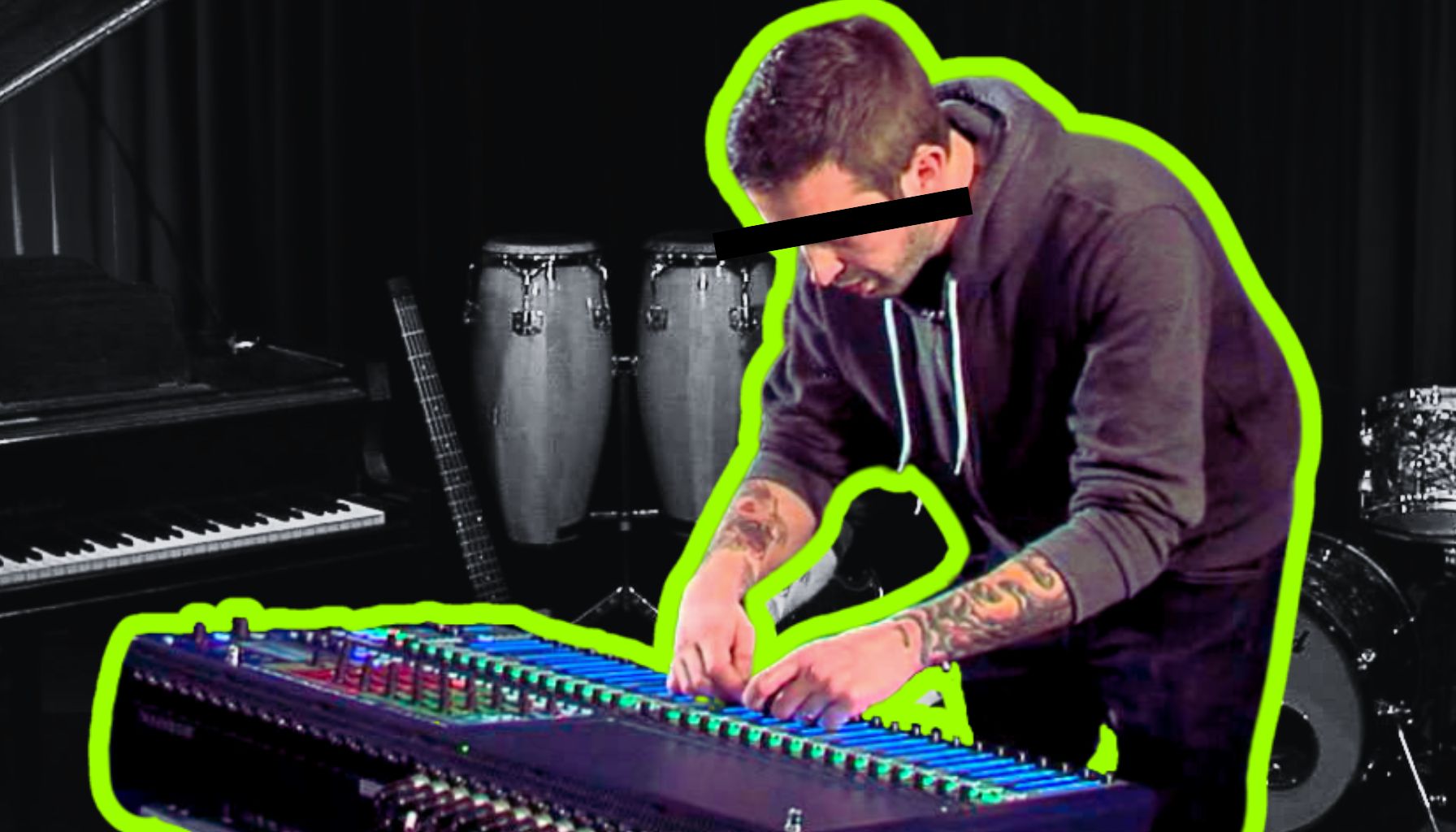Definition of Music Sync Rights
Ever watched a movie scene that left you with goosebumps, and thought, “Wow, that tune was spot-on!”? That’s the magic of music synchronization, or “sync” for short, which is like a matchmaker for music and visual content. Sync rights are the golden tickets allowing songs to be legally wedded to movies, TV shows, commercials, and more.
They’re crucial in the music and media industry because they ensure that creators get paid for their music’s role in storytelling and brand building.
What are sync rights?
Sync rights are permissions granted by the copyright holder of a song to synchronize music with some form of visual media output. Think of it as the legal green light for using that killer track in your latest YouTube video or indie film project.
Importance in the music and media industry
In an era where a song’s streaming debut can be overshadowed by the next viral hit, sync rights are the unsung heroes that can propel a track to stardom. They’re a critical revenue stream and a massive opportunity for artists to gain exposure beyond the traditional avenues.
Overview of the Sync Licensing Process
Navigating the sync licensing process is like learning a new dance. It takes a few steps to master, but once you’ve got the rhythm, you’re set to groove. This process is a collaborative tango between music rights holders and those who wish to feature the music.
Parties involved
On one side, you’ve got the music rights holders – the composers, songwriters, and publishers. On the flip side, there are the media producers, directors, and music supervisors looking to score the perfect soundtrack for their visual content.
Steps to obtaining a sync license
Securing a sync license typically involves identifying the right holders, negotiating terms, and signing on the dotted line. It’s a delicate dance that requires both grace and legal savvy.
The Value of Sync Rights for Artists
For artists, sync rights are like finding a rare vinyl at a garage sale – incredibly valuable. They’re not just about the upfront payday; they’re a chance to connect with new audiences and amplify your brand.
Revenue potential
A sync placement can range from a few hundred bucks in a low-budget indie to big bucks in a blockbuster. And let’s not forget the royalties that keep on giving, long after the initial sync deal.
Brand exposure
When your track accompanies a poignant scene or a memorable ad, it doesn’t just fill the bank; it cements your music in the hearts and minds of viewers. That’s the kind of exposure that money can’t buy. As we segue into the next act, keep in mind that understanding sync rights is just the opening riff.
Next up, we’re diving deeper into the basics of sync licensing, where we’ll explore the intricacies of copyright, the pivotal role of publishers and sync agents, and the various types of media that bring music to life. It’s time to tune up and get ready to play in the big leagues of the music and media industry.
Understanding Copyright and Ownership
Diving into the world of sync licensing without a grasp on copyright is like trying to play a guitar solo without tuning your instrument first—it can lead to some dissonant outcomes.
For musicians, copyright is the bedrock of their legal rights and is essential for protecting their creative works. When it comes to sync rights, understanding the nuances of copyright is as critical as hitting the right notes in a melody.
Copyright basics for musicians
Copyright is the exclusive legal right given to creators for the protection of their original work. For musicians, this means their songs are safeguarded against unauthorized use, allowing them to control how their music is reproduced, distributed, and, importantly, synchronized.
Types of rights within a song
A song has two main components: the composition (the written music and lyrics) and the sound recording (the actual audio recording). Each has its own set of rights, and both need to be cleared for sync licensing. It’s a bit like a musical duet—both parts need to work in harmony.
The Role of Publishers and Sync Agents
Navigating the sync licensing maze can be overwhelming, but that’s where publishers and sync agents come into play. They’re the roadies of the music licensing world, ensuring that the legal and promotional heavy lifting is handled so artists can focus on the main act—creating music.
How they facilitate sync deals
Publishers and sync agents act as intermediaries, connecting the dots between musicians and those looking to license music. They pitch tracks to music supervisors, negotiate deals, and handle the paperwork, ensuring that artists get a fair shake.
The difference between the two
While publishers typically manage rights and royalties for the compositions, sync agents specialize in placing music in media. Think of publishers as the managers of a band, while sync agents are the talent scouts looking for the next big gig.
Types of Media That Require Sync Licensing
The demand for music in media is as varied as the genres on your playlist. Sync licensing isn’t just for blockbuster films or binge-worthy TV shows—it’s also for the ads that interrupt them, the video games that immerse us in other worlds, and the burgeoning array of digital content that fills our screens.
Films and TV shows
From indie flicks to prime-time dramas, music sets the tone and heightens emotions. It’s a supporting actor that can steal the show without uttering a single word.
Commercials and advertisements
Commercials have the power to turn a tune into a trend. A catchy jingle or a well-placed song can transform an ad from a bathroom break into a cultural phenomenon.
Video games and other digital content
In the interactive realm of video games, music goes beyond the background—it becomes part of the player’s experience, as integral as the graphics and gameplay. As we fine-tune our understanding of sync licensing basics, we’re ready to riff into the next section where we’ll explore how sync rights play in a band with other music rights. We’ll dissect the differences between performance, mechanical, and sync rights, and why mastering this trio is essential for any artist looking to amplify their music career. So, strap on your guitar, and let’s keep the rhythm going.
Performance vs. Sync Rights
So you’ve mastered the art of sync licensing basics, but here’s the twist in the plot: sync rights are just one member of the music rights band. Enter stage left, performance rights. They might sound like two peas in a pod, but they’re as different as acoustic and electric guitars.
Public performance licenses
When your tune gets played on the radio, at a club, or even in an elevator, that’s where performance rights come into play. Organizations like ASCAP or BMI collect royalties on behalf of songwriters and publishers for these public performances. It’s like a tip jar that collects every time your song plays in public.
Distinctions from sync licenses
Sync rights, on the other hand, are all about pairing your music with visual content. It’s a one-time permission slip, whereas performance rights keep on giving every time your song hits the airwaves or a public space.
Mechanical vs. Sync Rights
If performance rights are the continuous stream of income, mechanical rights are the bread and butter of recorded music sales. These rights come into play when your music is reproduced on CDs, vinyl, or even as digital downloads.
Physical and digital reproduction
Every time someone presses ‘buy’ on iTunes or spins your vinyl, mechanical rights ensure you get a slice of that pie. It’s the financial fuel that keeps the engine running for recording artists and songwriters alike.
How sync rights are unique
Sync rights, in comparison, are a bit like a bespoke suit—it’s tailored for a specific use in media and typically involves a one-off payment. But don’t be fooled; the right sync placement can lead to increased sales and streams, giving those mechanical rights a healthy boost.
Master vs. Composition Rights in Sync
When it comes to sync, there’s a dynamic duo to consider: the master and the composition rights. These two should be in perfect harmony for a sync deal to hit the right note.
Ownership of recordings vs. compositions
Master rights belong to the owner of the recording—often the record label. Composition rights are held by the songwriter or their publisher. It’s a bit like a script and its movie adaptation—you need the rights to both to bring the full picture to life.
Navigating both for sync deals
To secure a sync license, you’ll need to get approval from both the master and composition rights holders. Miss one, and it’s like a drummer skipping a beat—not good for the groove of your project.
As we fade out from the distinctions among various music rights, we’re now stepping into the financial spotlight where the real action happens. In the next section, we’ll delve into the financial aspects of sync licensing—where we talk sync fees, royalties, and the art of negotiation. So, keep your accounts in tune, and let’s make sure your next sync deal hits the financial high notes!
Sync Fees and Royalties
Let’s face it, in the music biz, cash is king and sync licensing is the kingdom’s treasury. But how do those shiny coins make their way into your pocket? Understanding sync fees and royalties is like knowing the secret handshake in an exclusive club—the better you know it, the more you’re in.
How fees are determined
Sync fees are as varied as the playlists on a music streaming service. They’re influenced by factors like the popularity of the song, the type of media, and the duration of the use. Negotiating a sync deal without knowing these details is like a guitarist playing a solo without knowing the scale.
Ongoing royalties from sync placements
And then there’s the gift that keeps on giving: royalties. When your song is synced, you may be entitled to royalties every time the media is played. It’s the song that keeps on earning, making every play count like the chorus in a hit single.
Negotiating Sync Licensing Agreements
Negotiating a sync deal without savvy can leave you feeling like a one-hit-wonder. To avoid being a cautionary tale, you need to know what levers to pull and when to hold out for a better chorus.
Factors affecting negotiation
The clout of the artist, the budget of the project, and even the territory of use all play a part in this financial symphony. It’s a delicate balance, like finding the perfect harmony in a complex chord.
Strategies for favorable terms
Knowing your worth and understanding the market is key. Always aim high, but be ready to improvise. It’s a bit like jazz—you’ve got a structure, but there’s room for a killer solo that could make the whole gig.
Case Studies of Successful Sync Deals
Nothing spells success in the world of sync licensing quite like a case study. These are the platinum records of the sync world, showcasing what happens when the right song meets the right opportunity.
Big-budget examples
Big-budget films and ad campaigns can catapult a song from obscurity to the top of the charts. It’s the dream gig that can turn a garage band into stadium rockers overnight.
Independent artist successes
But let’s not forget the indie artists who’ve struck gold. A well-placed song in a cult TV show or indie game can be the break that indie artists have been strumming for. It’s the kind of success story that doesn’t need pyrotechnics to make a bang. As we wrap up this section, with your mind now buzzing with thoughts of sync fees and the sweet sound of royalties, it’s time to switch gears.
Working with Music Supervisors
You’ve got the tunes, you’ve got the swagger, now who’s going to get your music into the next big binge-worthy series? Music supervisors. These are the gatekeepers of the sync world, the ones with the power to weave your melodies into the fabric of film, TV, and more.
Who they are and what they do
Music supervisors are like the head chefs of the audiovisual feast, selecting the perfect musical ingredients to complement the visual narrative. They scout for tracks that enhance the storytelling, evoke emotions, and resonate with audiences. Knowing what makes them tick can be the difference between your song gathering digital dust or becoming the soundtrack to someone’s favorite scene.
Building relationships with supervisors
Building a rapport with music supervisors can seem like dating in the digital age—complex and competitive. But fear not, the key is to be genuine, persistent, and armed with a killer playlist. Be ready to showcase your music’s potential to sync seamlessly with their projects.
Pitching Your Music for Sync
Pitching music is an art form in itself. You might have a track that makes the angels weep, but if you can’t sell it, you’ll be playing to an audience of none.
Creating an effective pitch
Your pitch should be like a hit single: catchy, memorable, and leaving them wanting more. It should highlight the versatility of your music and how it can elevate a scene or a campaign. Think of it as a trailer for your track—it needs to hook them in a matter of seconds.
Best practices for submissions
When submitting your music, professionalism is the name of the game. Ensure your tracks are well-produced, easily accessible, and properly tagged. It’s like showing up to an audition—you want to look and sound your best.
Utilizing Online Sync Platforms
In the digital age, online sync platforms are like the music industry’s dating apps—they can match your song with the perfect project in just a few clicks.
Benefits and drawbacks
These platforms can amplify your reach, connecting you with opportunities worldwide. However, the competition is fierce, and standing out in a sea of talent requires more than just a good profile. Your music needs to be the total package—catchy, well-produced, and versatile.
How to choose the right platform
Not all sync platforms are created equal. Research is crucial—look for platforms with a track record of success and a user-friendly interface. Think of it as choosing the right venue for your gig—you want the best stage for your sound. As we crescendo from the insider tips on finding sync licensing opportunities, let’s not lose the rhythm.
The next section is where the rubber meets the road: the legal considerations in sync licensing. We’ll dive into the fine print of contracts, the nitty-gritty of rights clearance, and how to protect your musical masterpiece from being used without your encore. So, tune up your legal knowledge—it’s about to take center stage.
Understanding Sync Licensing Contracts
Alright, you’ve got your foot in the door with music supervisors and your pitches are hitting the right notes. Now, let’s talk turkey—legal turkey, that is. Sync licensing contracts are the binding agreements that will make sure your rights are as protected as a drum kit in a hailstorm.
Key terms and clauses
These contracts are packed with legalese, but don’t let them intimidate you. Key terms to look out for include the scope of use, term length, and territory. It’s like knowing the rules of the road before you take the tour van out for a spin.
Rights and restrictions
Understanding the rights you’re granting and the restrictions placed upon the licensee is crucial. You wouldn’t hand over the keys to your vintage guitar without knowing who’s borrowing it and for what gig, right?
Clearing Rights for Sync
The sync world is a maze of rights and clearances, and navigating it requires the finesse of a seasoned tour manager. Clearing rights means ensuring all stakeholders are on board and properly compensated.
The clearance process
This process can be as complex as a prog rock time signature. Whether it’s the composer, publisher, or record label, everyone needs to sign off. Miss a beat, and the whole deal could come crashing down like a poorly set-up stage.
Dealing with multiple rights holders
When a song has multiple rights holders, it’s like being in a band with too many lead singers—everyone wants a piece of the action. Coordination and communication are key to getting everyone in harmony.
Protecting Your Music
Now that you’ve got the contract signed and the rights cleared, it’s time to make sure your music is protected like the crown jewels.
Copyright registration
First things first: copyright registration. It’s the equivalent of putting a lock on your guitar case. It ensures you have the legal grounds to enforce your rights should someone try to pull a fast one.
Monitoring usage and enforcing rights
And just like a sound engineer at the mixing board, you need to monitor the usage of your music. Keeping tabs on where and how your music is used will help you enforce your rights and ensure you’re getting every dime you’re due. As we fade out from the legal jargon and step into the next stage, remember: the sync licensing journey doesn’t end with a contract. It’s a continuous gig.
Quality and Production Standards
Imagine you’re at a buffet, and there’s a dish that looks like a masterpiece but tastes like cardboard. That’s a no-go for sync licensing. The quality of your production can make or break your chances of landing a deal.
Industry expectations
The industry expects crystal-clear audio, no background noise, and a mix that would make a Grammy-winning engineer nod in approval. It’s not just about the notes you play; it’s about how they’re served up to the listener’s ears.
Technical requirements for submissions
Before you send off your tracks, make sure they meet the technical specs. We’re talking about the right file formats, sample rates, and bit depths that make techies swoon. It’s the nitty-gritty that ensures your music doesn’t hit a sour note when it’s played on the big screen.
Metadata and Organization
Metadata is like your music’s DNA—without it, nobody knows what it is or where it came from. It’s the who, what, when, where, and why of your tracks.
Importance of metadata
Proper metadata makes your music searchable and identifiable. Imagine a music supervisor desperately seeking a track like yours, but they can’t find it because you skimped on the details. That’s a missed opportunity singing the blues.
Organizing your catalog for easy access
An organized catalog is like a well-tuned instrument; it just works better. Have your tracks sorted by mood, genre, tempo—you name it. Make it easy for music supervisors to find the perfect song for their scene, and you’ll be the maestro of their musical heartstrings.
Creating Sync-Friendly Music
Creating music that’s ripe for sync is like crafting a fine wine—it needs the right elements to be irresistible.
Elements that appeal to music supervisors
Music supervisors look for tracks that can carry a scene or fade into the background. It’s about having that hook, melody, or beat that sticks in the mind like the chorus of a summer hit.
Adapting existing tracks for better sync potential
Sometimes it’s about tweaking what you’ve got. An acoustic version of your banger might be just what a cozy coffee shop scene needs. Flexibility and adaptability can turn your one-hit-wonder into an all-rounder. As we harmonize the technical aspects of preparing your music for sync opportunities, let’s not forget the emotional strings it can pull.
Emotional Impact of Music in Visual Media
Let’s cut to the chase: music is the emotional backbone of visual media. It’s the unsung hero that can make you bawl like a baby during a movie’s climax or grin ear-to-ear during a sitcom’s punchline. Music has the power to turn a good story into an epic one, and when it comes to branding, it’s the secret sauce that can make a commercial stick in your head for days.
Enhancing narratives with music
Think of music as the spice in the storytelling stew. Just the right track can amplify the impact of a scene, pushing the story into the stratosphere of audience emotions. It’s about finding that perfect harmony between what’s on screen and what’s in the speakers.
Creating memorable brand associations
On the branding side of the street, music is the hook that catches the ear of potential customers. It can embody a brand’s personality and values, making it as recognizable as the logo slapped on every ad. That’s the kind of catchy you want your music to be.
Selecting the Right Music for Projects
Now, you might wonder, how do you get your tunes to be that secret sauce? It all boils down to the selection process.
The selection process for supervisors
Music supervisors are like the matchmakers of the music and visual media world. They sift through mountains of tracks to find the one that’ll make the scene or campaign pop. It’s about understanding the vibe they’re after and serving up a platter of your best beats.
Aligning music with project themes
To get your music picked, it needs to resonate with the project’s themes. Whether it’s a heart-wrenching drama or a quirky indie flick, your music should feel like it was tailor-made for the moment. That’s when you know you’ve hit the sync jackpot. As we fade out from the emotional crescendo of music in storytelling and branding, we turn up the volume on the latest trends shaking up the sync licensing world.
In the next section, we’re diving into the influence of streaming services, the rise of independent artists, and the globalization of sync markets. So stay tuned, because the industry is hitting a high note, and you don’t want to miss a beat.
The Influence of Streaming Services
In the fast-paced world of media consumption, streaming services are like the new rock stars on the block, shaking up the sync licensing game. These platforms are not just changing how we binge-watch our favorite shows; they’re creating a plethora of opportunities for music to be heard by global audiences.
Opportunities in new media
Streaming giants like Netflix, Hulu, and Amazon Prime are on the hunt for fresh tunes that can set their content apart. This digital renaissance means your music could be one click away from being featured in the next binge-worthy series.
The impact on traditional sync markets
As these platforms grow, traditional TV and film are taking notes. They’re stepping up their game to stay in the limelight, which means more opportunities for your music to shine across all types of screens.
The Rise of Independent Artists in Sync
Gone are the days when major labels held all the cards. Independent artists are now playing a winning hand in the sync licensing casino.
DIY licensing platforms
Thanks to DIY licensing platforms, indie musicians can pitch directly to music supervisors without needing a major label deal. It’s like having a backstage pass to the industry, democratizing the process of music selection.
Success stories from the indie scene
The indie scene is bursting with success stories that prove you don’t need to be a household name to land a lucrative sync deal. It’s about the right sound at the right time, and with a little hustle, that sound could be yours.
Globalization of Sync Markets
The world’s getting smaller, and the sync market is stretching its arms wide open to embrace a global audience.
International licensing considerations
Navigating international licensing can be as complex as a polyrhythmic drum solo, but it’s worth it. With the right strategy, your music can cross borders and resonate with listeners from Tokyo to Timbuktu.
Cross-cultural appeal of music
Music is a universal language, and a track that hits hard in one part of the world can do the same elsewhere. Embrace the diversity of sounds and rhythms in your work to appeal to a broader audience, and watch as your music becomes a global traveler.
FAQs: Navigating the Sync Licensing Maze
You’ve got questions, we’ve got answers. When it comes to sync licensing, there’s no such thing as a silly question—only the ones you kick yourself for not asking. So let’s dive into the FAQs that are buzzing in every artist’s mind.
What are the first steps to getting my music considered for sync?
First, ensure your music is of top-notch quality and ready for prime time. Next, get your metadata in order because it’s the compass that guides music supervisors to your treasure. Then, start building relationships with those supervisors, or get your tracks on reputable sync platforms where they can be discovered.
How long does a typical sync licensing deal last?
Sync deals are like snowflakes—no two are exactly the same. They can range from a one-off use to a multi-year agreement. It all depends on the project’s needs and how much the other party loves your tune.
Can I still use my music elsewhere after a sync deal?
Absolutely, unless you’ve signed an exclusive deal that says otherwise. Just remember to read the fine print, or better yet, have a legal eagle take a gander before you sign anything.
What happens if someone uses my music without a sync license?
That’s a no-no in the music biz. If you catch wind of your music being used without permission, it’s time to talk to a lawyer. Protecting your rights is key, and sometimes you’ve got to flex those legal muscles.
How can I ensure I’m paid correctly for sync placements?
Keep tabs on where and how your music is being used. Register with a performing rights organization—they’re like your financial guardians in the sync world. And don’t be shy about following up on payments; after all, that’s your hard-earned cash we’re talking about.
Remember that the music industry is an ever-evolving beast. Stay in tune with the latest trends, keep your music fresh, and who knows? Your next track might just be the anthem for the next big hit show or the jingle that gets the whole world humming. Keep strumming, keep humming, and keep syncing.


